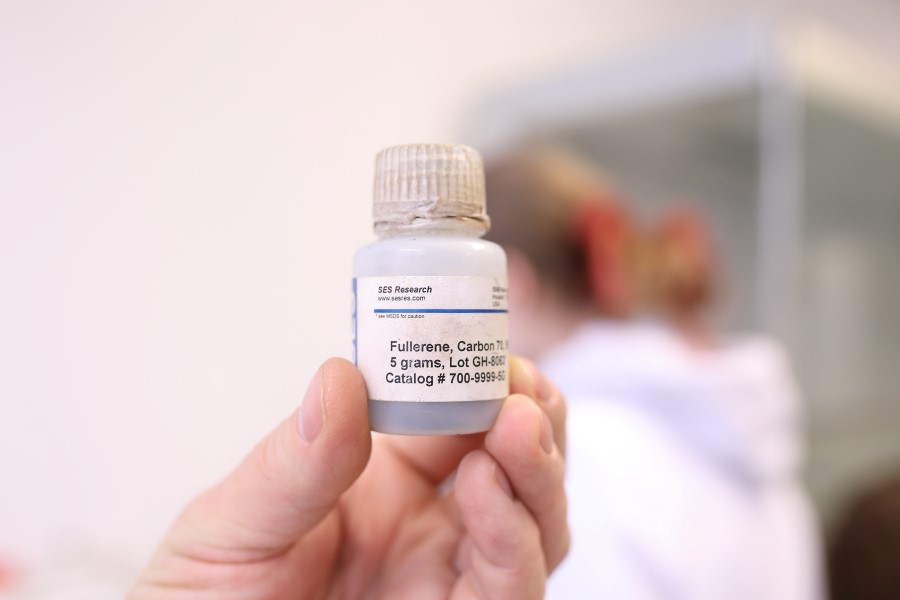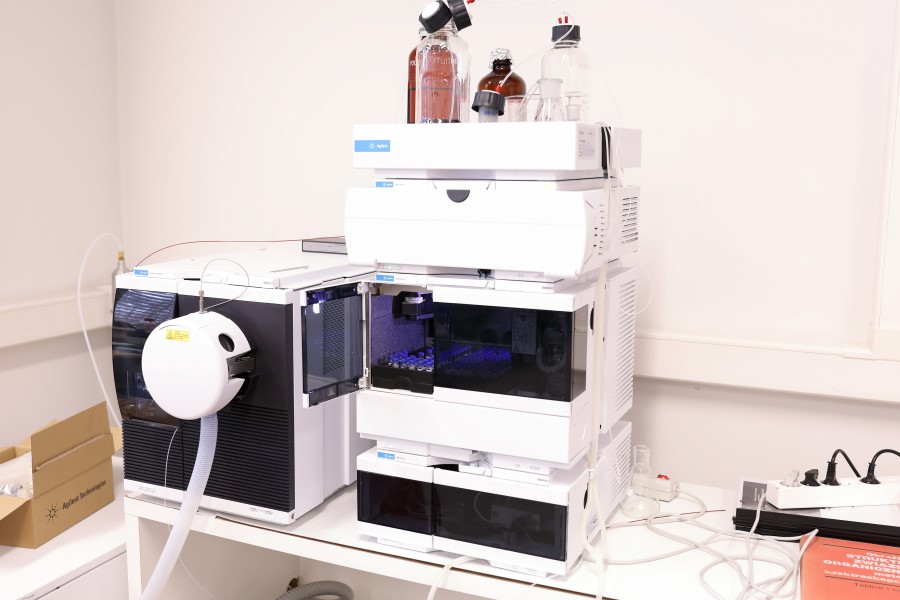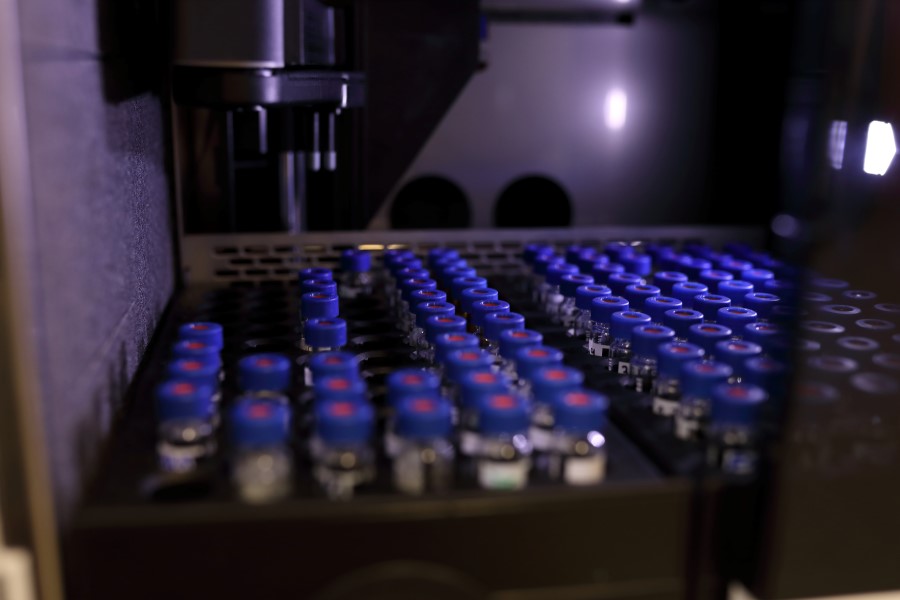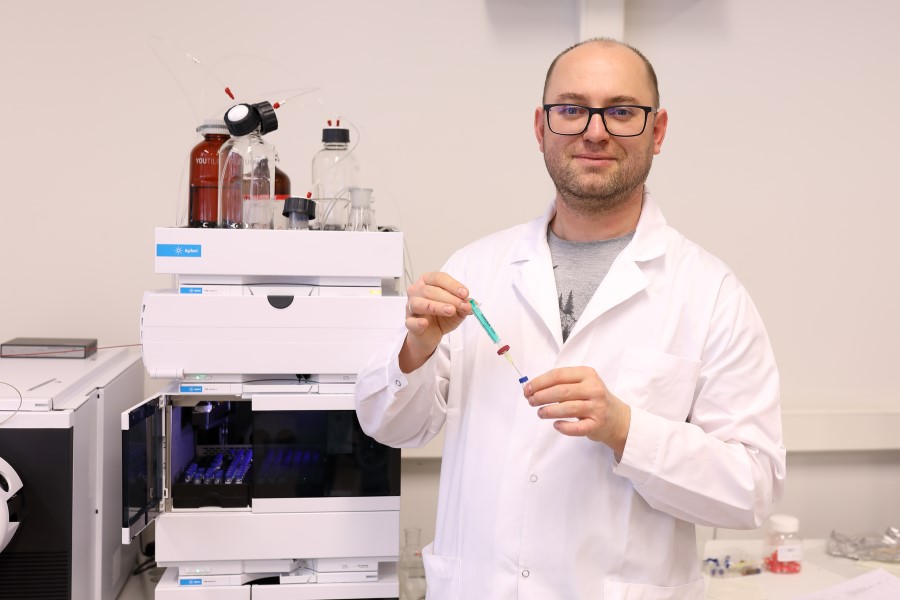| Olimpia Orządała |
Nanotechnology, one of the fastest-growing scientific disciplines, deals with structures, materials, and devices on the nanometer scale, i.e. at the level of molecules and individual atoms. It can be used in various areas of life, including medicine, electronics, transport and food production. It is particularly interesting for scientists dealing with targeted anticancer therapies. Maciej Serda, PhD Eng. from the Faculty of Science and Technology of the University of Silesia in Katowice is developing fullerene nanotherapeutics for the treatment and diagnosis of pancreatic cancer as part of a project financed by the National Science Centre.
Nanomedicine is our future
To better understand how nanotherapeutics work, it is worth to understand the importance of nanomedicine first. It cannot be denied that it is the future of modern medicine. This is evidenced by, among others, the fact that it played an important role during the SARS-CoV-2 pandemic. As emphasised by Maciej Serda, PhD, Eng., thanks to nanomedicine we were able to use new types of vaccines. All the latest mRNA-based drugs are bound to a nanometric carrier, the so-called cationic liposomes. The Food and Drug Administration (FDA) and the European Medicines Agency have already registered about 60 drugs of this type that can be used to treat patients.
‘These are various types of antibacterial drugs, and the so-called drug formulations enclosed in micelles, in liposomes, complexed with proteins (e.g. albumin), which provide new opportunities for the use of old-type drugs’ explains the researcher.
Nanomedicine may also be helpful in the treatment of cancer thanks to personalised, i.e. molecularly targeted therapies. This is an innovative treatment method developed for specific genetic disorders detected in a given patient.
A particularly aggressive opponent
So far, there has been no effective drug for pancreatic ductal adenocarcinoma. This is the most common, extremely aggressive type of pancreatic cancer. It can quickly spread to surrounding organs without causing any symptoms. Traditional chemotherapy turns out to be ineffective in the fight against this enemy. Scientists are constantly looking for an effective way to treat and diagnose pancreatic cancer using new types of therapies (immunotherapies, gene therapies, and nanotherapeutics).
‘Our basic research activity is an attempt to fight pancreatic cancer’ says Maciej Serda, PhD Eng., manager of the project implemented as part of the OPUS competition. The aim of the project is to develop new theranostic agents that both facilitate therapy and serve for diagnosis. One of the hopes for fighting pancreatic cancer is the use of fullerenes.
A few words about fullerenes
Fullerenes are an allotropic form of carbon discovered quite recently – the first research was carried out in the 1980s.
‘Scientists noticed that after laser irradiation of graphite rods at high temperatures, strange substances resembling soot were produced. At that time, there was no term to describe them’ explains the chemist from the University of Silesia. ‘They were examined using a mass spectrometer, which always showed the dominant mass to be 720 Da. If we divide it by the atomic mass of carbon, which is 12, we get 60 carbon atoms’ he adds.
American scientists concluded that the magic element found in the soot resulting from the experiment is a compound containing 60 carbon atoms. It took several years to establish and confirm its correct structure. In 1996, for the discovery of fullerenes, the Nobel Prize in Chemistry was awarded to Harold Kroto from the University of Sussex in Brighton and the team of Richard Smalley and Robert Curl from Rice University in the United States.
As argued by Maciej Serda, PhD, Eng., fullerenes are unique carbon nanomaterials.
‘If we appropriately modify them chemically, they will be perfectly soluble in water. Some fullerene derivatives even resemble red wine in colour. We call it fullerene wine’ the researcher laughs and adds: ‘It is fascinating to me that after carrying out appropriate chemical reactions, we can make fullerenes perfectly soluble in water.’
The research team led by the scientist from the University of Silesia has discovered that fullerenes can interact with many molecular targets.
‘When we mark water-soluble fullerene with a fluorophore, i.e. a ‘molecular light’ that allows us to observe under a microscope how fullerene circulates in a given biological system, we will notice that it leaks from the blood vessels of tumors much more than from normal tissues’ explains the researcher. ‘We can observe that during rapid multiplication, cancer tissues become ‘holey’. To put it another way: they create their vessels so quickly that there are holes in them. If fullerene compounds are of the right size, they can leak out of the tumor’s blood vessels and lodge there. This is a unique thing, compared to e.g. low-molecular compounds.
ESI mass spectrometer | photo: Olimpia Orządała
Test tubes in the mass spectrometer | photo: Olimpia Orządała
Research: from cells to animals
The team led by Maciej Serda, PhD, Eng. is currently completing cell research. The scientists have discovered that some fullerenes have high biological activity and are non-toxic in a fruit fly model.
‘A serious challenge for every chemist before us, which is the transition to an animal model’ says the researcher.
‘We want to check the effectiveness of individual fullerenes on a mouse model of pancreatic cancer. Moving from a cellular model, which is a certain simplification of the entire biology of cancer, to an animal model will allow us to obtain answers to many questions, e.g. whether the compound is toxic to mice. Now our next action will be to prepare and develop the formulation, determine the dose and method of administering our fullerene nanomaterials to mice’ says the chemist.
The main goal of research is the possibility of creating medication for humans. However, scientists still have a long way to go. Animal studies are a major milestone that will allow us to better understand the biodistribution of fullerene compounds, including where exactly they are located in the bodies of mice and how quickly they are removed. Although initial studies at the cellular level have yielded many positive results, the difference between cellular and animal studies is enormous.
‘It may turn out that at the animal stage fullerene compounds are toxic, bind to proteins too permanently or are removed from the body very quickly and are not even able to achieve a given therapeutic effect. I am not yet able to say whether we will be able to conquer the Kilimanjaro of creating anticancer drugs that are more effective than chemotherapy’ emphasises the scientist.
It is worth noting that good cooperation between researchers from different fields of science plays an important role in drug development.

Silesia relies on coal – in nanomedicine
Maciej Serda, PhD, Eng. is a member of a research team dealing with medical chemistry – drug design and nanopharmacology. The leader of the team operating at the Institute of Chemistry of the University of Silesia is Prof. Robert Musioł. Researchers also cooperate with the pharmaceutical biophysics team led by Anna Mrozek-Wilczkiewicz, PhD, DSc, Assoc. Prof. from the Institute of Physics of the University of Silesia and the Centre for Design and Synthesis of Drugs and Materials of the University of Silesia in Chorzów, directed by Prof. Eng. Jarosław Polański.
‘This centre is unique because we can perform full biological and chemical analysis of various compounds there. In the laboratory, we obtain our fullerene nanomaterials, which we can chemically characterise, obtain their image using transmission and scanning microscopes, and we can also see what it looks like on the nanometer scale. In addition, in our laboratories we perform tests on cancer cells’ says Maciej Serda, PhD, Eng. ‘We also cooperate with a team of biologists working under the supervision of Prof. Magdalena Rost-Roszkowska from the Faculty of Natural Sciences of the University of Silesia, thanks to which we can test compounds on living organisms, i.e. fruit flies. Our project has interdisciplinary features, and thanks to our centre in Chorzów, we do a lot of things locally, here, in Silesia. We also cooperate with materials science engineers who help us image fullerene compounds, as well as with molecular biologists, to answer, among others, to the question in which parts of the cell our carbon ‘nanospheres’ are located. In Chorzów, we do not only conduct research on mice, but we have been cooperating in this regard for a long time with the team led by Prof. Martyna Elas from the Jagiellonian University.
I am glad that we can show that Silesia is something more than just coal mining industry. We are proving that we can do something groundbreaking with this material, and help our society’ sums up the scientist from the University of Silesia.
The project ‘Theranostic agent based on the structure of [60]fullerene for the treatment and diagnosis of pancreatic cancer, headed by Maciej Serda, PhD, Eng. was co-financed by the National Science Centre as part of the OPUS competition.
Marcin Serda, PhD, Eng. from the Institute of Chemistry of the University of Silesia | photo: Olimpia Orządała








